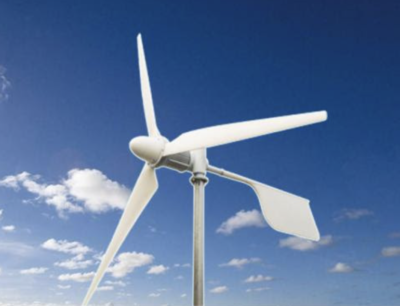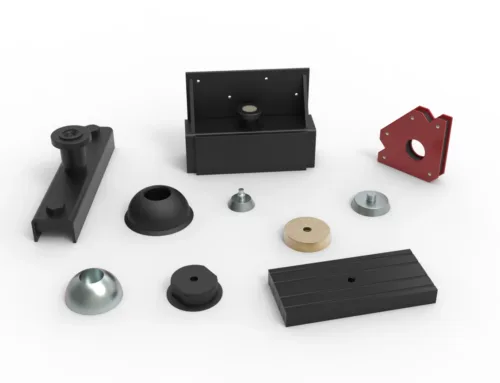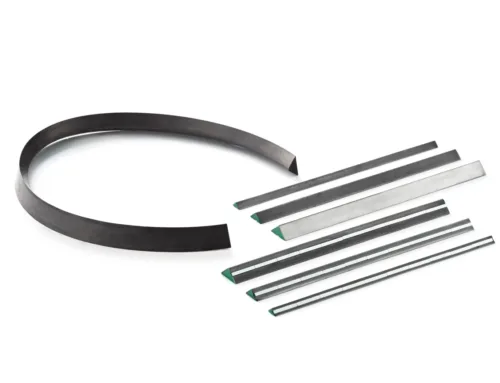We’ve seen wind turbines become a game changer in the world of clean electricity and the transition to renewable energy. One of the key components in modern wind turbines is the permanent magnet, especially those made of rare-earth materials like neodymium-iron-boron. These magnets help make wind turbines more efficient, lower the cost, and increase the reliability. They are a must-have in today’s energy world.
How Wind Turbines Work
Wind turbines today are very advanced machines that can generate enough electricity to power hundreds of homes. The basic process is the strong wind turns the turbine blades, which are connected to a central shaft. That mechanical motion is then converted into electrical energy by the generator. Permanent magnets play a key role in this process, especially in permanent magnet synchronous generators (PMGs) that are becoming more popular versus the older, gearbox-dependent systems.
In traditional wind turbines, they use induction generators. These induction generators use electromagnets to create a magnetic field. That means they have to have an external power source. It also requires heavy gearboxes. These gearboxes can weigh as much as 80 tons. They add a lot of weight and complexity to the turbine, making them expensive to maintain. On the other hand, PMGs eliminate the need for gearboxes. They use powerful rare earth magnets to generate electricity directly without the need for an external power source. This means the nacelle is lighter, the construction cost is lower, and it’s more efficient because you have fewer moving parts, which means less friction and less wear and tear.
Benefits of Rare-Earth Magnets in Wind Turbines
The wind turbine industry prefers rare-earth magnets, particularly neodymium magnets, for several reasons. First, PMGs don’t require an external power source to create a magnetic field, which means you don’t lose energy creating that magnetic field and makes the design simpler. Second, rare-earth magnets have a high energy density. That means you can use less material, which reduces the weight and size of the magnet. Also, it gets rid of some of the issues with copper windings in older generators, such as insulation degradation and shorting.
Another advantage of PMGs is they work well at lower wind speeds. That means you can generate more energy in more locations. You don’t have to have those consistent 20-25 mph winds. This makes wind energy a more viable option in certain areas where the wind isn’t as consistent. Another benefit of PMGs is you don’t have to have a gearbox. That means you don’t have to maintain a gearbox. That’s a big deal if you’re trying to maintain a wind turbine 10 miles offshore in the ocean where it’s hard to get to and costs a lot of money to do it.
Magnetic Solutions for Wind Turbine Construction
It’s not just the generators where magnets are used. They also use magnets in the construction and maintenance of wind turbines. In the past, if you wanted to secure something inside the tower of a wind turbine, you had to drill holes or weld brackets to the tower walls. That weakened the structure, which could cause metal fatigue and corrosion. Manufacturers have come up with magnetic mounting systems. These magnetic mounting systems allow you to securely attach equipment to the steel walls without compromising the tower’s integrity. For example, you can use strong neodymium magnets placed strategically along ladders to keep them from swaying. This improves worker safety, reducing the risk of accidents and operational downtime.
Sustainability and the Future of Wind Energy
Wind energy is one of the fastest-growing renewable energy sources. The projections show that U.S. wind capacity will double by 2030. Wind turbines produce electricity without emitting carbon dioxide or other greenhouse gases. They are a cleaner alternative to fossil fuel power plants. Wind turbines don’t require water to generate power. That’s a big deal in some of these arid regions where water is scarce.
The increased use of wind power helps countries reduce their dependence on imported fossil fuels. This helps stabilize energy costs and makes them more secure. Wind is a fuel source that’s essentially infinite as long as the sun continues to heat the surface of the Earth. That sustainability, combined with the ongoing development of more efficient turbines, makes wind energy a critical part of the world’s effort to combat climate change.
Conclusion
So, there you have it. Magnets, especially rare-earth permanent magnets, are a big deal in the modern wind turbine industry. They help make wind turbines more efficient, lower the cost, and decrease maintenance. As the use of wind energy continues to grow as a clean, sustainable power source, the innovative use of magnets will continue to help solve operational challenges and meet environmental goals. With wind turbines projected to play a bigger role in the world’s energy mix, you can bet the use of magnets in this industry will continue to grow. That will drive more advancements in renewable energy technology.Please contact us for more details.






Leave A Comment